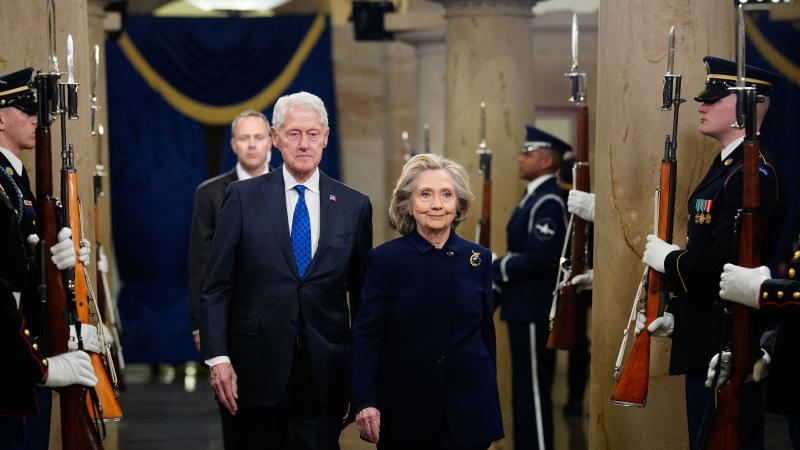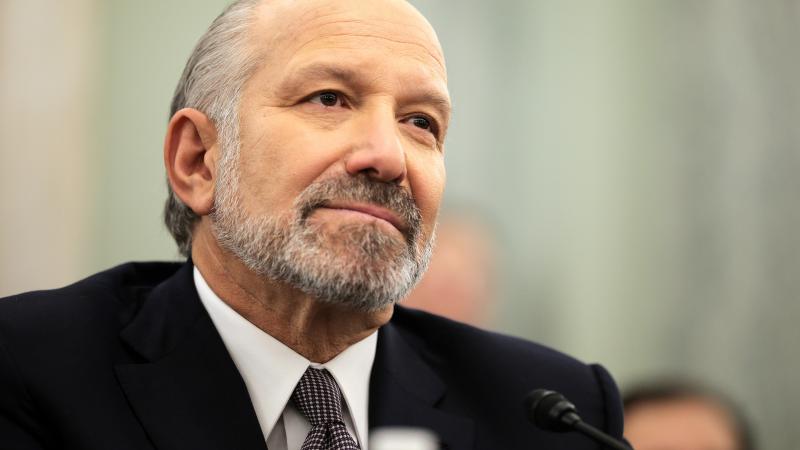Ben Carson: Racially ignorant media don't know most minorities now live in suburbs
"They don't know the facts," HUD Secretary Ben Carson told Just the News in a video interview at the White House. "They don't know that 52% of African-Americans live in the suburbs, that 60% of Hispanics live in the suburbs, 62% of Asian-Americans live in the suburbs."
Housing and Urban Development (HUD) Secretary Ben Carson is frustrated by what he calls false reporting about a Trump administration policy decision on housing zoning, saying media coverage relied on racial stereotypes that ignore that most minorities live in suburbs.
Last month, the Trump administration reversed an Obama-Biden-era regulation that would have allowed HUD to abolish single-family zoning and require the construction of high-density apartment buildings (what the administration called "stack and pack" housing) in residential neighborhoods. The Trump administration pushed back on the Obama-Biden plan, saying it would erode the quality of life in suburban America. The move was widely attacked in the national media as racist.
"I've grown to expect little in the way of analysis or truth from most of the media," Dr. Carson told Just the News in a video interview at the White House. "So many of them said that our policy is racist, and we're trying to keep suburbs white and silly stuff like that. You know, they don't know the facts. They don't know that 52% of African-Americans live in the suburbs, that 60% of Hispanics live in the suburbs, 62% of Asian-Americans live in the suburbs."
Matt Schuck, HUD's director of strategic communications, told Just the News that the department examined the top 100 metropolitan areas by population size and found that 52% of African-Americans live in the suburbs, 60% of Hispanics, and 62% of Asian-Americans.
Research from other organizations has found similar trends. In a 2016 article in The Atlantic, for example, Alana Semuels cited this research from Brookings Institution fellow Elizabeth Kneebone: "Today, the majority — 52 percent — of African Americans in the nation's top 100 metro areas live in the suburbs of those regions ... In 2000, the majority — 55 percent — of African Americans in the 100 largest metro areas lived in the big cities that anchor those regions."
The Pew Research Center reported in 2018 that "Urban and suburban counties are becoming more racially and ethnically diverse at a much faster pace than rural counties," noting that since 2000, "the white population did not grow as sharply as other groups did, leading to a decline in the white share of the total U.S. and suburban populations."
Carson and President Trump defended their policy change in a Wall Street Journal op-ed, writing: "Americans of all walks of life have voted with their feet and put down roots in the suburbs. Across income segments and demographic groups, households have higher rates of homeownership in the suburbs than in urban centers. Decades of liberal governance have tragically made many urban cities unaffordable and others unlivable, unable to provide for their citizens' basic needs in housing, public safety and education."
As renowned urbanist Richard Florida put it in a 2019 Bloomberg article: "Today's suburbs no longer look much like the lily-white places portrayed on 1950s and 1960s sitcoms."
Florida, a distinguished visiting fellow at New York University's Schack Institute of Real Estate, explained the changing complexion of the suburbs this way:
... There are two parts to this African-American suburbanization. On the one hand, it is the result of low-income African Americans being pushed out of gentrifying parts of cities. And on the other, it involves the black middle class choosing to move to more upscale suburbs. Taken together, they add up to considerable shift.
But it is not just African Americans who are headed to the suburbs: other minority groups are, too. Demographer William Frey of the Brookings Institution has documented the dramatic growth of "melting pot suburbs," where minorities constitute 35 percent or more of the population. ... Whites comprised less than ten percent of growth of the suburban population in America's 100 largest metros between the years 2000 and 2010.
Carson told Just the News the policy change on suburban zoning was driven by a belief in the principle of federalism — decentralizing authority to empower state and local governments, who understand local issues better than Washington and are more more accountable to local voters, who have the most at stake in solving local problems.
"What we're saying is the suburbs — and the people who are responsible at the local level — can run it anywhere they want, they can build whatever they want, but let them do it, not the federal government," Carson explained. "Because we want people doing things who are responsible to the voters and therefore will work in a way that makes sense in their various localities."














